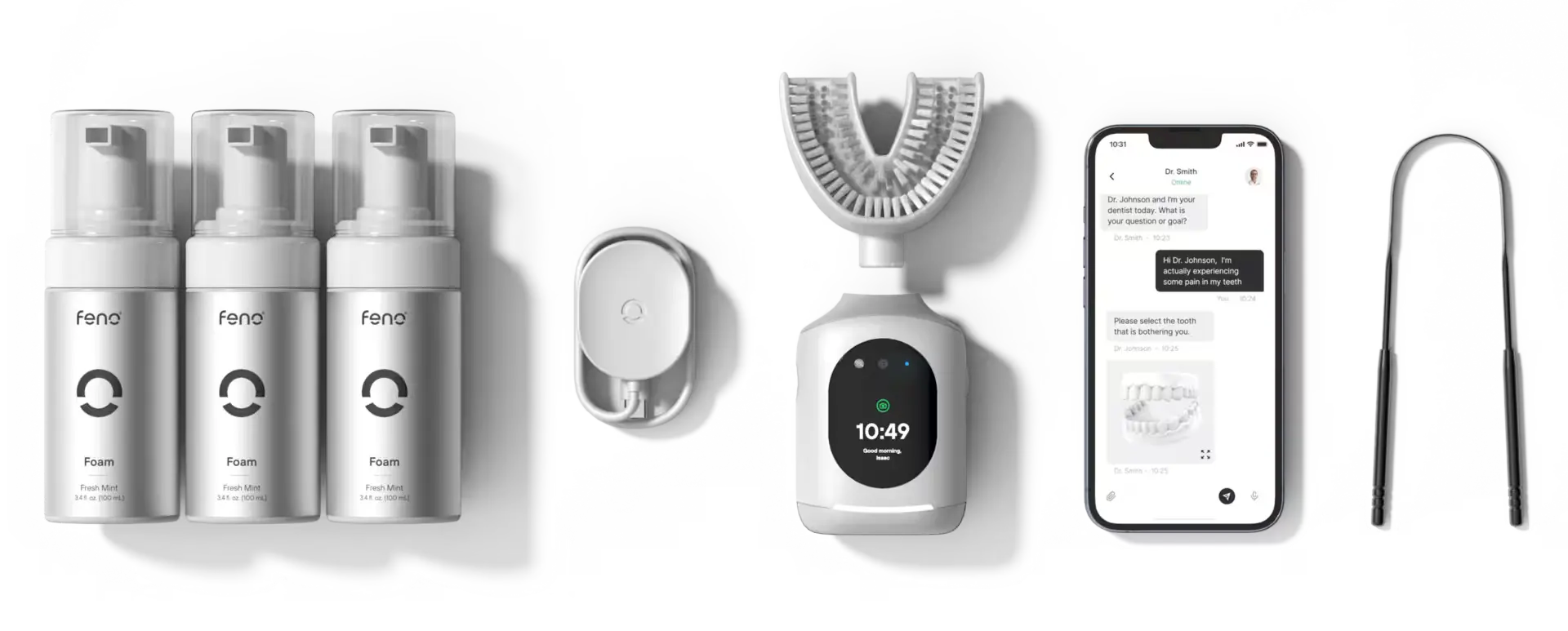
Gumline Brushing Technique: The Simple Way to Prevent Gum Disease
Essential Takeaways
- Gumline brushing using the Bass Technique, angling your toothbrush 45° toward the gums with gentle circular motions is the most effective way to remove plaque where it starts, preventing gingivitis, gum recession, and long-term periodontal disease.
The gumline is where your teeth meet your gums - and it's also where gum disease begins. Plaque-induced gingivitis starts with bacterial biofilm accumulation right at this critical junction. When plaque builds up at the gumline and isn't removed effectively, it leads to gum inflammation, bleeding, recession, and eventually more serious periodontal disease if left untreated.
Most people focus their brushing on the visible tooth surface, but neglecting the gumline leaves behind the biofilm that causes the most damage.
(StatPearls,2025)
What Research Shows
Plaque Builds at the Gumline
Dental research consistently confirms that the gumline is a major site of plaque accumulation. While clinical studies show plaque tends to accumulate heavily where the tooth meets the gum, this is where most gum disease begins. The bacteria in this biofilm trigger the inflammatory response that leads to gingivitis and, if not addressed, periodontitis.
The Bass Technique Works
The Bass Technique. Brushing at a 45° angle toward the gumline using gentle circular motions, is widely cited in dental research as the most effective method for removing biofilm at the gum margin. Studies demonstrate that improper brushing angles and harsh scrubbing leave residual plaque that leads to bleeding gums and persistent gingivitis, while the Bass Technique significantly improves plaque removal in this critical area.
(International Dental Journal, 2024)
Gumline Brushing Reduces Gingivitis
Systematic reviews and clinical studies confirm that focused gumline brushing, combined with proper interdental cleaning (floss or interdental brushes), demonstrably reduces plaque, prevents gingivitis, and improves long-term gum attachment. Research shows these practices directly support periodontal health and prevent progression to more severe gum disease.
(StatPearls,2025)
How to Brush Your Gumline Properly
1. Angle Your Toothbrush at 45° Toward the Gums Position your brush so the bristles point toward your gumline at a 45-degree angle, rather than straight into your teeth. This angle allows the bristles to reach beneath the gumline where plaque hides.
2. Use Gentle Circular Motions, Not Scrubbing Move your brush in small, gentle circles. Avoid harsh back-and-forth scrubbing, which can damage gum tissue and actually leave plaque behind. Let the brush do the work. Gentleness is key.
3. Don't Forget Interdental Cleaning Brushing alone isn't enough. Use floss or interdental brushes daily to clean between teeth where your toothbrush can't reach. This removes plaque in areas most prone to decay and gum disease.
4. Brush for 2 Minutes Twice Daily Spend adequate time cleaning all surfaces of your teeth, paying special attention to the gumline on both the outer and inner surfaces.
5. Smart Tools Make Technique Easier Brushing the gumline correctly takes awareness and precision—but smart technology can help make it effortless.
The Feno Smartbrush™ is designed to naturally guide bristles along the gumline at the optimal 45° angle, ensuring every surface gets the right pressure and coverage without harsh scrubbing.
Its custom mouthpiece with 18,000 soft bristles and adaptive sonic motion helps remove plaque where it starts along the gum margin while protecting delicate tissue. The connected Feno app also provides personalized feedback on brushing patterns, helping you build better gumline habits over time.
The Bottom Line
Healthy gums depend on mindful brushing. Not just cleaning the teeth, but focusing intentionally on the gumline where disease starts. By adopting the Bass Technique and combining it with daily interdental cleaning, you're taking the most evidence-based approach to preventing gingivitis, gum recession, and long-term periodontal disease.
Small shifts in technique make the biggest difference in your oral health outcomes.
FAQs
Q: Can the Bass Technique cause gum damage?
A: No. The Bass Technique uses gentle circular motions and proper angulation, which is designed to protect gum tissue while effectively removing plaque. Damage typically comes from aggressive, horizontal scrubbing not from proper technique.
Q: How often should I clean my gumline?
A: Brush your gumline twice daily (morning and night) and floss or use interdental brushes at least once daily, ideally before bed.
Q: What toothbrush should I use?
A: Use a soft-bristled toothbrush. Medium or hard bristles can damage gums. Electric toothbrushes with oscillating heads are also effective for gumline cleaning and can help ensure you're using proper technique.
Q: How long does it take to see results?
A: Many people notice reduced gum bleeding within 1-2 weeks of consistent gumline brushing. Significant improvements in gum health can be seen within 2-4 weeks.

Feno Founders Edition Bundle
Advanced Oral Health in 20 Seconds with the Feno Smartbrush™
Get Yours Now!





